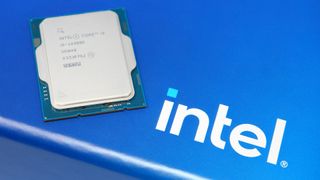Intel pressures all motherboard manufacturers to implement default power settings by the end of May
Stock should actually mean stock.

The issue of instability with some 13th and 14th Gen CPUs has been bubbling away for some time. It began with reports of game and application crashes, and even reports of BSODs in various forums across the internet. The i9 13900K, i9 14900K and their KS counterparts are far more likely to experience these issues than i5 and i7 SKUs, and these issues have been narrowed down to what can essentially be termed as unstable automatic overclocking. The chips in question just can't handle what's being asked of them.
For many years, Intel has allowed motherboard manufacturers to take liberties with various power settings, by allowing them to set short term and long term power limits well above the so-called default values. This delivers higher performance, which Intel and its partners are happy with.
The problem is, hitting and/or maintaining all-core clocks speeds over 5GHz and single core speeds over 6GHz is clearly asking too much of many CPUs—which are not all created equal. It seems Intel pushed things a step too far with its latest chips.
By now it's well known that 14th Gen CPUs are an iterative update over 13th Gen CPUs, which are themselves an evolution over the 12th Gen CPUs Intel released in late 2021. All are built with the Intel 7 process. Without meaningful performance-boosting architectural updates or a node shrink, Intel went down the path of shoving more power into its chips in order to achieve higher clock speeds.

Best AIO cooler for CPUs: Keep your chip chill.
Best air cooler for CPUs: Classic, quiet cooling.
In response to these stability issues, motherboard manufacturers have been rolling out BIOSes with a baseline power profile, even if it's not enabled by default. I'm happy to see the option, but changing BIOS settings at all is a step too far for many users, many of whom are not comfortable with changing, or knowledgeable about things like power profiles.
Benchlife reports that Intel is demanding motherboard manufacturers implement the baseline power settings by default by May 31. Of course, there's no way Intel can force BIOS updates onto systems out in the wild, so this will presumably affect motherboards shipping from this date, while BIOS updates posted on support pages after May 31 will have the baseline profile enabled by default.
It will hurt performance, but it will hopefully eliminate instability issues caused by overly aggressive power and turbo settings. It will lessen cooling demands too. My 13900K and 14900K chips are easily capable of hitting 100 degrees Celsius before AIO cooler fan speeds have time to ramp up in response.
The biggest gaming news, reviews and hardware deals
Keep up to date with the most important stories and the best deals, as picked by the PC Gamer team.
I'll close by putting my cynic hat on. When Intel launches its new Arrow Lake CPUs later in the year, at least they'll look a lot better on those marketing slides when they're compared to leashed i9 chips. Still, that won't stop myself and others from testing both the default baseline profile alongside the previous 'default' settings that nearly all LGA 1700 boards have been shipping with for the last two and a half years.

Chris' gaming experiences go back to the mid-nineties when he conned his parents into buying an 'educational PC' that was conveniently overpowered to play Doom and Tie Fighter. He developed a love of extreme overclocking that destroyed his savings despite the cheaper hardware on offer via his job at a PC store. To afford more LN2 he began moonlighting as a reviewer for VR-Zone before jumping the fence to work for MSI Australia. Since then, he's gone back to journalism, enthusiastically reviewing the latest and greatest components for PC & Tech Authority, PC Powerplay and currently Australian Personal Computer magazine and PC Gamer. Chris still puts far too many hours into Borderlands 3, always striving to become a more efficient killer.
Most Popular





